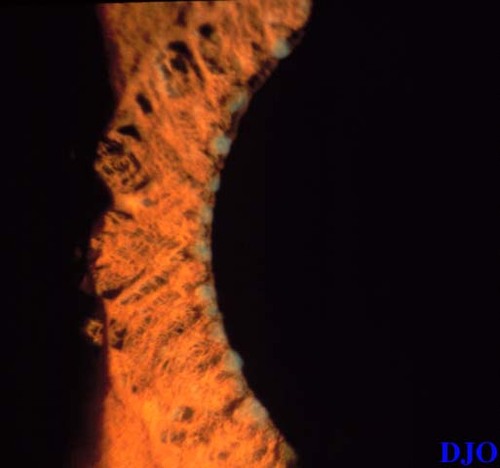General Ophthalmology Quiz 6

Figure 1
Figures 1-2. These are iris changes in two patients with histories of recurrent iritis.
Figures 1-2. These are iris changes in two patients with histories of recurrent iritis.

Figure 2
Answer: Koeppe and Busacca nodules. Koeppe nodules are small nodules located on the pupillary border. Busacca nodules are usually larger nodules located on the mid periphery of the iris.
2. What type of inflammation is most likely to cause these iris changes?
Answer: Granulomatous inflammation. Koeppe and Busacca nodules are iris granulomas on pathologic examination.
3. What systemic conditions are most likely to be consistent with iritis and the above iris changes?
Answer: Sarcoid, tuberculosis, syphilis, and Vogt Koyanagi Harada Syndrome. Lyme disese, leprosy, and brucellosis, may also be considered in endemic areas.
4. What is the differential diagnosis of an iris mass?
Answer: Nevi, melanoma, metastasis, iris cyst, leioymoyma, tumor of the iris pigment epithelium, inflammatory granuloma.
5. What type of systemic work-up should you do in a patient with the above clinical findings?
Answer: CBC, ESR, ANA, RPR or VDRL, FTA-ABS or MHA-TP, PPD and anergy panel, Chest X-ray to rule out sarcoidosis. Consider Lyme titer in endemic areas.